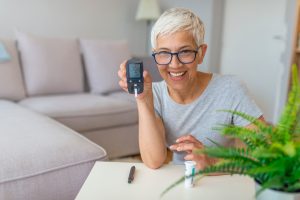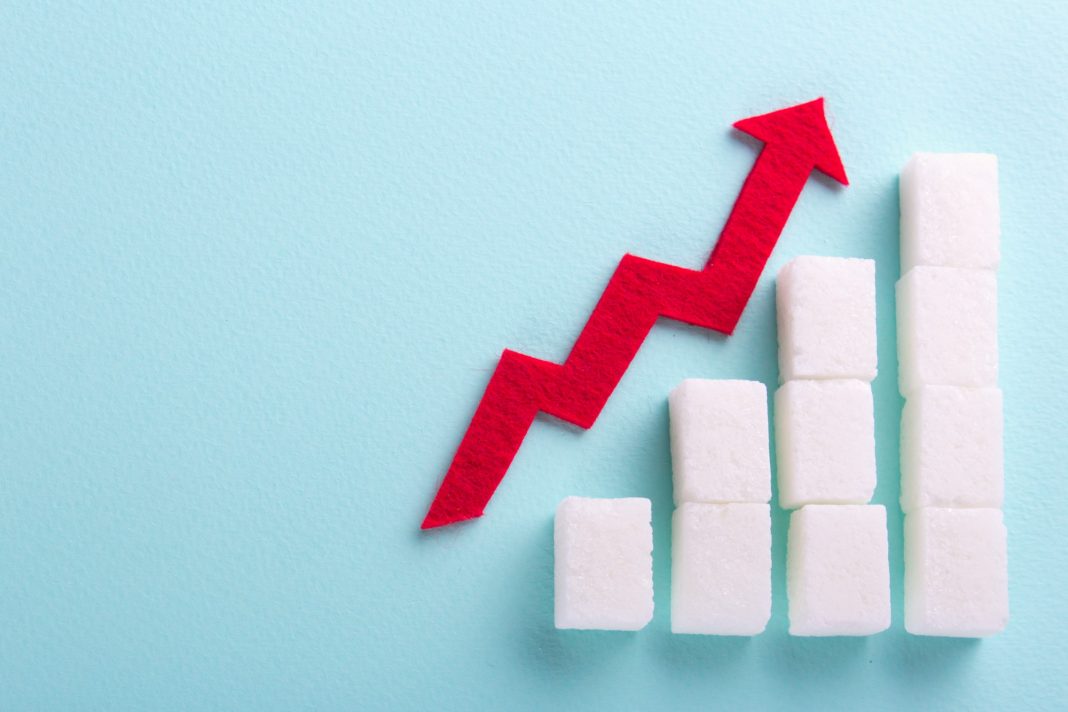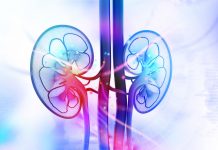For many of us, the silly season means frequently reaching for the lolly jar while perhaps forgoing regular healthy eating and exercise routines. However, extra treats and reduced exercise, among other factors, can lead to a high that you don’t need: high blood glucose levels.
In the December issue of Retail Pharmacy Assistants magazine we delved into the topic of hyperglycaemia: what it is, how it’s caused and how to manage things when blood glucose levels rise.
Hyperglycaemia occurs when a person’s blood glucose level (BGL) is above 15mmol/L, according to Diabetes Queensland Pharmacist and Credentialled Diabetes Educator Alison Crow.
“It can occur in people with type 1 diabetes, type 2 diabetes and gestational diabetes,” she said.
She adds that the triggers for hyperglycaemia include “not having enough insulin or medication to treat diabetes; eating more carbohydrate than your medication or your body can cope with; being sick, stressed or having an infection; being less active; other medications such as corticosteroids; and overtreatment of a hypoglycaemia event”.
Accredited Practising Dietitian Dr Alan Barclay, spokesman for Dietitians Australia, says “steroids are a good example” of medications that can cause or contribute to hyperglycaemia.
“It gets back to stress hormones,” he said. “There are other medicines as well. So, people with HIV on certain medications, I believe, are at an increased risk.
“There are many things that can cause high blood glucose levels, such as infection, so it’s not just food. Stress hormones can raise blood glucose levels, [so] any severe moment of stress or anxiety can make the blood glucose levels go up. [As can] excessive exercise … if you really get your adrenal levels pumping, then it can raise blood glucose levels.
“Moderate exercise is wonderful for healthy people to lower blood glucose levels, but sometimes, if you’re doing really strenuous exercise, that can put your blood glucose levels up. So, people need to be aware of that,” continued Dr Barclay.
Ms Crow warns that it’s important not to ignore high BGLs as, “if left untreated … this can be life threatening”.
“If a person has high blood glucose, it should be treated,” she said. “If they have ketones present in their blood over 0.6mmol/L, they should begin to follow their sick-day management plan or contact their doctor, credentialled diabetes educator or go to the hospital for treatment.”
While BGLs may fluctuate, Ms Crow advises that if they “remain high for a few days”, medical management is important.
“In type 2 diabetes, blood glucose levels can fluctuate throughout the day,” she said.
“If a person notices their blood glucose remains high for a few days, or if they feel sick, they should contact their doctor or diabetes educator for guidance.”
Hyperglycaemia symptoms
Ms Crow says symptoms for hyperglycaemia include:
- Feeling excessively thirsty;
- Dry mouth;
- Frequently passing large volumes of urine;
- Feeling tired;
- Blurred vision;
- Infections (e.g., thrush, cystitis, wound infections);
- Weight loss;
- Headache;
- Confusion.
“If patients have high blood glucose or ketones, they shouldn’t exercise,” Ms Crow said.
Preventing hyperglycaemia
Ms Crow suggests the following measures to help prevent hyperglycaemia:
- Taking insulin or diabetes medications as prescribed.
- Checking BGLs frequently, especially if feeling sick.
- Consuming low-GI carbohydrates.
- Maintaining a high-fibre diet with two serves of fruit and five of vegetables daily.
- Reducing sugary beverages and highly processed foods.
- Being physically active.
- Reducing or controlling stress.
Hyperglycaemia management
The management of hyperglycaemia is multifactorial, often including a combination of medication, diet and exercise, which Dr Barclay refers to as “the three pillars”.
Ms Crow said: “For people with type 1 diabetes, they should contact their doctor or credentialled diabetes educator for advice on increasing their dose of short acting insulin at mealtimes.
“Extra doses of short acting insulin may also be required to treat the hyperglycaemia and bring down the blood glucose levels. They should also check their blood ketones and follow their sick-day management plan and seek medical treatment if their blood glucose and ketones continue to rise.”
For those with type 2 diabetes, Ms Crow says, “ongoing hyperglycaemia can mean that their medication is no longer effective … and they need to see their doctor”.
From a lifestyle perspective, Ms Crow adds that “sometimes people may have had a change in diet or lifestyle that may cause their blood glucose to be higher”, with Christmas often an occasion during which this happens.
“Referral to a dietitian or exercise physiologist for dietary and physical assessment may help to reduce hyperglycaemia episodes,” she said.
Role of pharmacy staff
Ms Crow recommends that “if a person presents with hyperglycaemia … the role of pharmacy staff is to support the person”.
She says this includes:
- Staying calm.
- Ensuring they’re cool and hydrated with non-glucose containing fluids.
- Understanding if they have type 1, type 2 or gestational diabetes, and how long their BGL level has been high.
- Asking if they’re actioning their sick-day management plan and helping them contact their support person.
- Ensuring (if the person is using insulin) that they have their insulin to use.
- If the person is feeling sick, referring them for medical treatment immediately.
- Calling an ambulance if the person is sleepy, has altered consciousness, or requests you to do this.
To read the full feature as it appears in the December issue of Retail Pharmacy Assistants magazine, visit: rpassistants.com.au/magazines/retail-pharmacy-assistants-december-2020/






